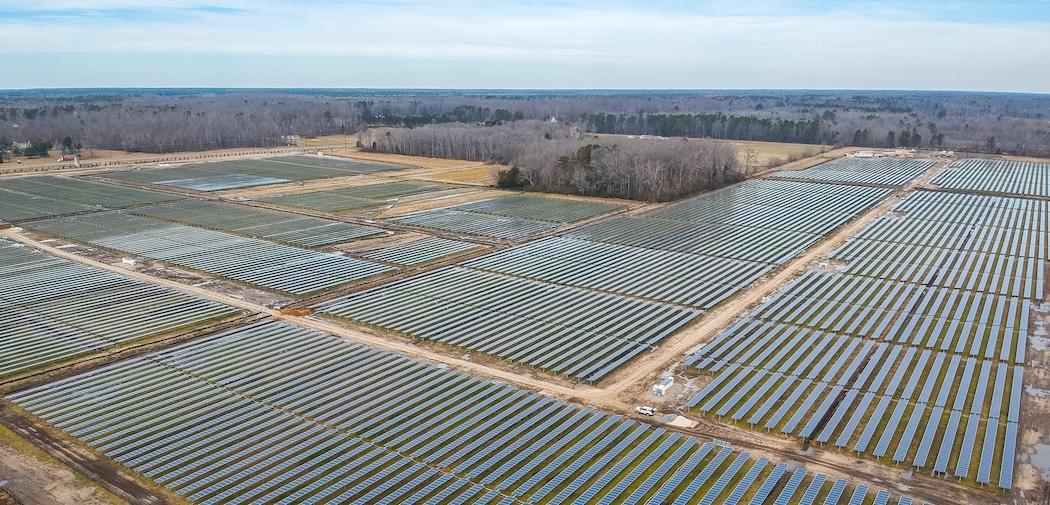Dominion Energy South Carolina is looking to set a record. It’s not the most coveted of records, depending on who you ask, but it’s a record nonetheless. In Dominion’s new avoided cost methodology form, the first review of rates before state regulators following the passage of the Energy Freedom Act in South Carolina, the utility is proposing an avoided energy cost rate for solar qualifying facilities at just $16.76 per megawatt-hour (MWh) for the first five years, the lowest of such known to pv magazine.
In comparison, the rate for a non-solar qualifying facility sits at $32.80/MWh during peak season, peak hours.
However the $16.76 figure above would apply for non-reserve, entirely new solar. With the passage of the South Carolina Energy Freedom act earlier this year, Dominion has been forced to implement the Public Utilities Regulatory Policy Act of 1978 (PURPA) for large-scale solar projects that are currently in the its interconnection queue. The utility must provide these projects 10-year contracts until such installed capacity reaches 20% of peak demand.
So, operating under the assumption that the facilities added will be from the queue, Dominion sets that rate at $23.46/MWh. The utility has forecast an integration cost of at least $6.70/MWh.
Power struggle
It would appear that the utility is attempting to undermine PURPA implementation after being forced to actually interconnect projects in its PURPA backlog, because like other utilities Dominion is generally averse to giving long-term contacts to independent power providers under PURPA.
And like other utilities, Dominion is arguing that it will be able to save money later by not being involved with long-term contracts if the price of power falls in the future.
The testimony of Ed Burgess, Senior Director at Strategen Consulting, brought in by the South Carolina Solar Business Alliance supports this, and suggests that the rates are an attempt by Dominion to control the state’s generation and sustain the viability of natural gas in South Carolina.
“DESC’s profit maximizing responsibility gives it at least two important incentives regarding avoided cost rates,” argues Burgess. “The first is that DESC, like other vertically integrated utilities, can maximize profits for shareholders by building and owning its own sources of generation. The second is that DESC’s business model incentivizes the company to maintain or increase natural gas consumption in the region.”
But it’s not about gas vs. solar, or any type of generational favoritism, according to Burgess, the issue boils down to the aforementioned strengthening of PURPA under the SC Energy Freedom Act. More specifically, Dominion isn’t thrilled with the idea of being forced to give long-term contracts to independent power providers.
“Because regulated utility companies earn an authorized rate of return on invested capital in rate base, they can increase total shareholder earnings by making new capital investments,” said Burgess. “Thus, it is logical for DESC to pursue sole ownership of generation assets, rather than enable competitive generators such as QFs to crowd out potential utility owned assets. This is because these competitors could obviate the need for utility-owned generation, thereby reducing future investment opportunities for DESC’s shareholders.”
Burgess then goes on the allude that the avoided cost rates given by Dominion are artificially low, made so in order to exclude potential competitive generators and maintain its ownership of generation resources.
What happens in this case will have major ramifications for the South Carolina solar industry. It is the first major challenge to the SC Energy Freedom Act and confirms that utilities are not the biggest fans of being told from who, where and at what cost they have to buy power.
This content is protected by copyright and may not be reused. If you want to cooperate with us and would like to reuse some of our content, please contact: editors@pv-magazine.com.









By submitting this form you agree to pv magazine using your data for the purposes of publishing your comment.
Your personal data will only be disclosed or otherwise transmitted to third parties for the purposes of spam filtering or if this is necessary for technical maintenance of the website. Any other transfer to third parties will not take place unless this is justified on the basis of applicable data protection regulations or if pv magazine is legally obliged to do so.
You may revoke this consent at any time with effect for the future, in which case your personal data will be deleted immediately. Otherwise, your data will be deleted if pv magazine has processed your request or the purpose of data storage is fulfilled.
Further information on data privacy can be found in our Data Protection Policy.